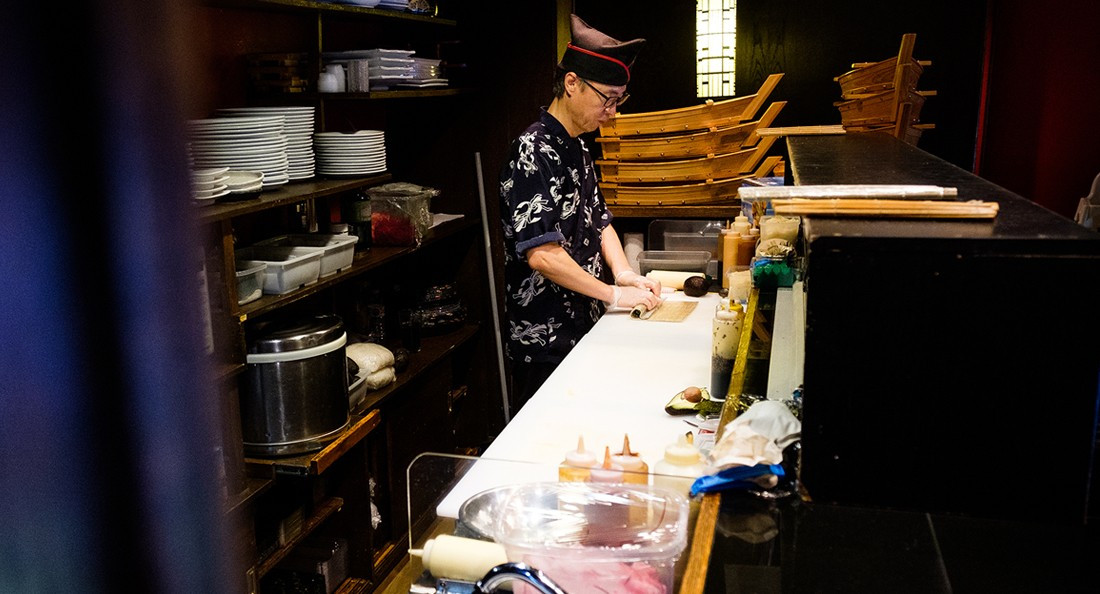Food from a different angle
The historical, cultural and environmental significance of what we eat
What comes to mind when you think of food?
Normally evaluated by its quantity, presentation and taste, food is typically catered to satisfy appetites and make money.
Learning about the history of recipes passed down through generations, the cultural significance of certain dishes, farming practices and food distribution processes can add a different perspective to the various poutines, tacos, sushi rolls and curries that are popular in Winnipeg.
It is time to look at food from a different point of view, and the Manitoba Food History Project (MFHP) provides a great lens to start with.
University of Winnipeg (U of W) history professor and MFHP’s lead investigator Dr. Janis Thiessen says she created the project, which is funded by the Social Sciences and Humanities Research Council, to give her students and co-workers opportunities to expand their perceptions of food and history.
“The idea is to study the history of food production, retail and consumption in Manitoba,” she says.
“It is an entry point for the audience to learn not just about the history of food, but the history of the province of Manitoba. When we study the history of food, we are also studying the history of migration, government policy, Indigenous-settler relations, multiculturalism and history of businesses.
“There is not an aspect of human life (that) does not impinge on food.”
MFHP’s goal is to travel through Manitoba and document food history through oral interviews aboard the Food History Truck, with information being archived at the Oral History Centre at the U of W. Supplied image
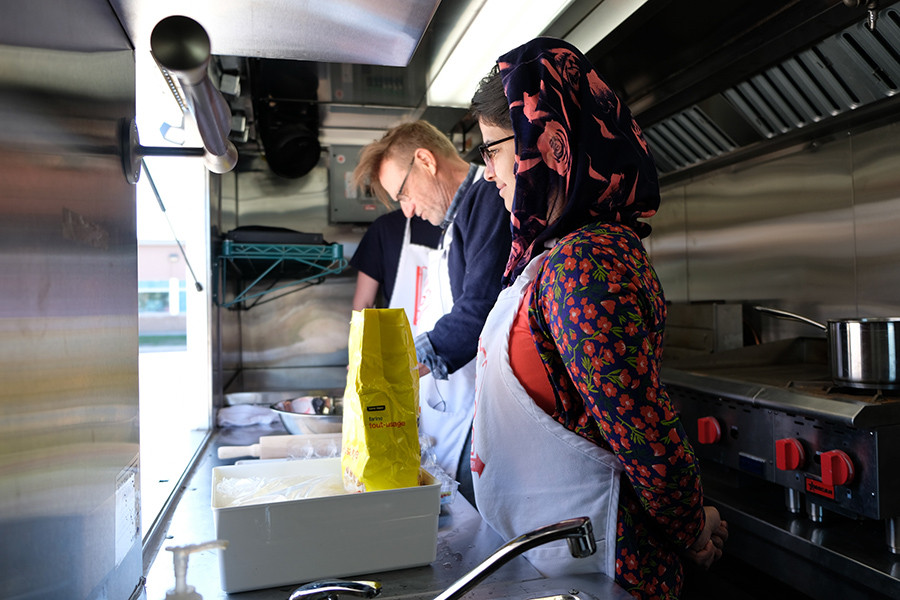
History, immigration and food
Thiessen notes that her interest in food history was sparked by its relatable nature and genuine interest by the community, and she aims to capitalize on this to get people interested in other aspects of human life that are connected to food.
“Part of (understanding food history) is understanding different cultures, and that our nostalgia for the past is exactly that, and not accurate history,” she says.
“It is to help people understand the past more accurately, and by studying the past, we understand how the present is different.”
“There are some cultures whose foods have been embraced, but people are not willing to pay a premium.” - Dr. Janis Thiessen of the Manitoba Food History Project
In her research on the history of Asian restaurants in Winnipeg, Thiessen found that they extend back to the Canadian Pacific Railway construction.
“During the 1880s to 1890s, Chinese populations were brought to Canada specifically for that purpose,” she says.
“When they found themselves looking for work, (and) because of the racial endemic of society at that time, there were only certain occupations open to them, namely laundries and restaurants.
“The consequence of this over time is that now there is not a town in Canada where you would not find a Chinese restaurant, and Chinese food has become mainstream for non-Chinese Canadians.”
However, Thiessen notes that although Chinese food and other international-ethnic foods are accepted, this does not necessarily result in an acceptance of culture, which can result in financial discrepancies with these foods.
“There are some cultures whose foods have been embraced, but people are not willing to pay a premium,” she says.
Thiessen notes that many assume “Chinese and other ethnic food should be cheap and affordable, but there are other cultures’ foods (for which) folks are quite willing to pay very high prices.”
Food diversity in Winnipeg
By highlighting the journey immigrants have faced in the food industry throughout Canadian history, there can be a greater appreciation of current efforts by international restaurants to succeed in Canada, such as Japanese restaurant Naru Sushi and Jamaican restaurant K and S Island Grill.
Owners Donggeun Kim and Gyeongog Lee consider Naru Sushi a meaningful restaurant, and along with developing new recipes to cater to Winnipeggers, the owners have extended their efforts to highlight their Japanese and Korean cultures in the restaurant.
“When we started Naru Sushi, we wanted to have a unique point in our restaurant,” they write in an email to The Uniter.
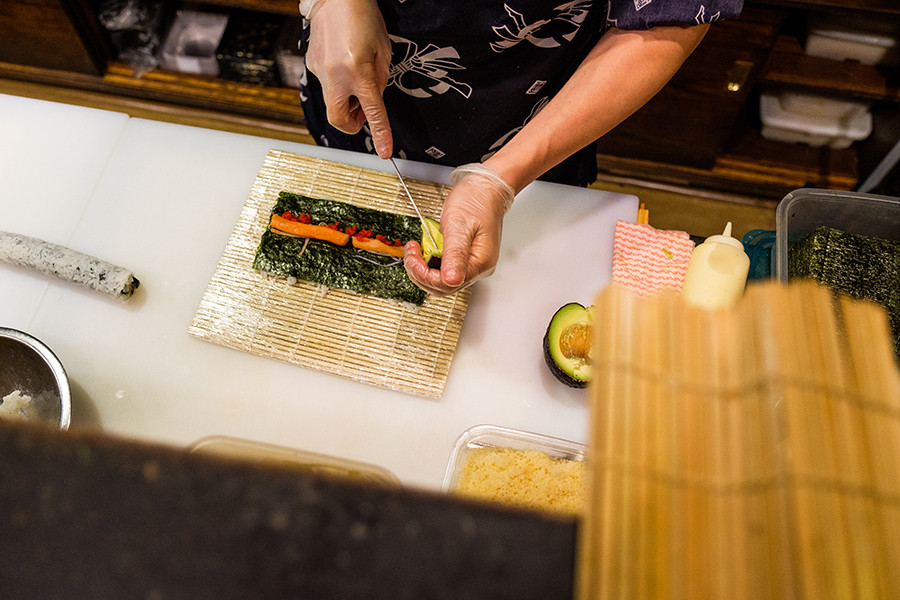
Hongki-Lee, a sushi chef of three years, prepares a California roll at Naru Sushi on Osborne Street.
Along with traditional décor, multilingual menus and the variety of sushi rolls and sashimi that earned the restaurant a 4.5/5-star rating on TripAdvisor, the owners use their attire and ambient music to add to the cultural experience of Naru Sushi.
“We ordered uniforms from Japan that resemble traditional Japanese costumes, and our employees wear this simplified Japanese uniform during work,” they say.
“We play K-pop, one of the symbols of South Korea, in our restaurant to make it easier for people to be familiar with Korean music.”
Kim and Lee say that international businesses provide a taste of their homelands to their international communities and potentially increase spaces of cultural awareness for other cultures.
“By supporting and increasing international business, people of similar cultures who want to study in or immigrate to Canada can be more enticed to come. Also, people in Winnipeg will be able to experience other cultures closely, and this helps (them) understand other cultures,” they say.
K and S Island Grill presents a cultural and historical approach like Naru Sushi, while also bringing spices, island vibes and a warm atmosphere to Winnipeg.
With the restaurant painted in the Jamaican flag colours, decorated with historical paraphernalia and filled with the ambient music of Bob Marley and other reggae artists throughout the day, owners Sean Ewers and Keisha Powell-Ewers says that “to give Winnipeg a taste of Jamaica is a pleasure for us,” when referring to the restaurant’s food, decor and atmosphere overall.
Once known as K and S Event Management, the two owners credit divine inspiration for starting K and S Island Grill.
“On a journey to a prison ministry at Headingley Correctional Centre last year, I was having a quiet moment with God about the future,” Powell-Ewers says.
“People kept asking us when we were starting a restaurant, and after contemplation during the journey, I began to look at available places to start a restaurant.”
Ewers notes that “we are from Mandeville in Jamaica, and when we saw an opportunity to start a restaurant on Mandeville Street, it just brought back something, and we said that this must be something of divine intervention.”
To put twists on certain local foods, the pair create dishes like jerk poutine and jerk chicken linguine. They emphasize that international restaurants are great points of contact for those interested in other cultures, especially people who have visited other countries.
“When we celebrated Jamaican independence this year, the customers were so excited, and when we introduce food from back home like escovitch fish, jerk chicken and curry goat, they asked us about the recipe and history behind the food.
“It is also amazing how many people leave Winnipeg, go to the Caribbean and come back loving and appreciating the cultures they interacted with.”
Climate change and the agricultural industry
On Sept. 27, thousands gathered at the Manitoba Legislative Building to join the Global Climate Strike. Though chants were organized to specifically protest fossil fuel use and fight for an increase in clean energy facilities and jobs, the relationship between climate change and the agricultural industry was seldom discussed.
A 2015 Canadian government report notes that the agricultural industry was responsible for eight per cent of the country’s greenhouse gas emissions, and according to the 2014 Intergovernmental Panel on Climate Change (IPCC) global assessment, climate change is a significant threat to farming and food security, which can affect the entire world.
As there are projects underway to reduce Canada’s agricultural industry emissions, it is important to highlight efforts that encourage new ways of farming and provide food security, which is something Thiessen learned at Churchill’s Boreal Gardens and Northern Studies Centre.
“When we had the opportunity to visit Churchill, we learned about some of the work people do there with respect to addressing food security issues in that community,” she says.
The work she refers to is Rocket Greens, a hydroponic vegetation system that is set up in climate-controlled shipping containers, providing a sustainable way to farm in the north, where subarctic climates make it less than ideal to grow vegetation.
“What we learned is that this is not something new brought about by the current climate issues. These efforts have been ongoing for generations (and have evolved over time).”
Moving forward
While people are becoming enlightened to the historical, cultural and environmental significance of food, this does not mean everyone should have social, intellectual and cultural pressures to learn the full extent of food history in Canada.
Though learning this information is not discouraged, simpler methods can be done to kickstart a better understanding and appreciation for food history.
Thiessen says “food can be a way of helping people understand different communities, but food alone will not do it.”
By simply conversing with family members about recipes, speaking with restaurant owners and staff about ingredients and the history behind dishes and décor and even cooking at home, people can begin their journey of food history appreciation.
The Manitoba Food History Project's Food History Truck gives people a chance to share their family recipes and food stories, which are archived at the U of W's Oral History Centre. // Supplied images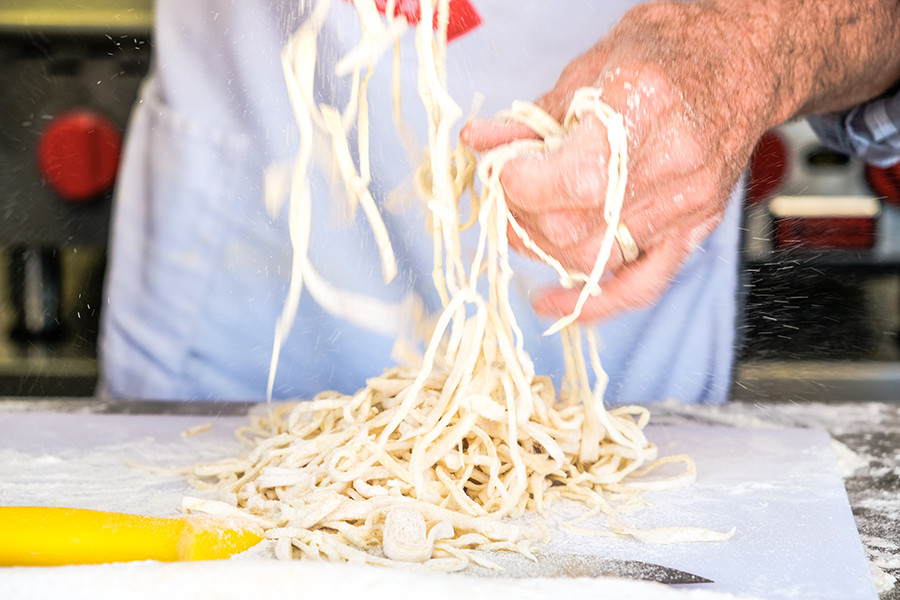
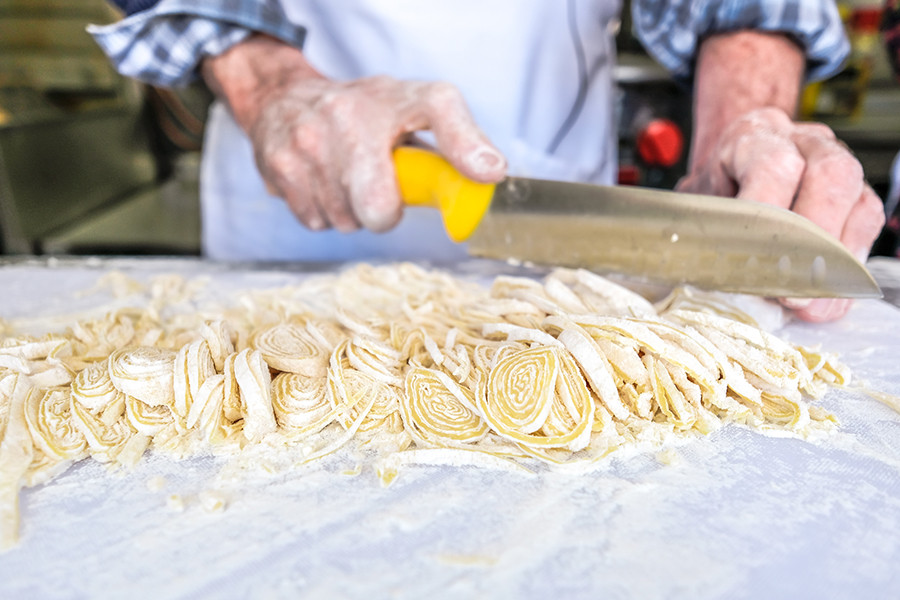
Published in Volume 74, Number 9 of The Uniter (November 7, 2019)

